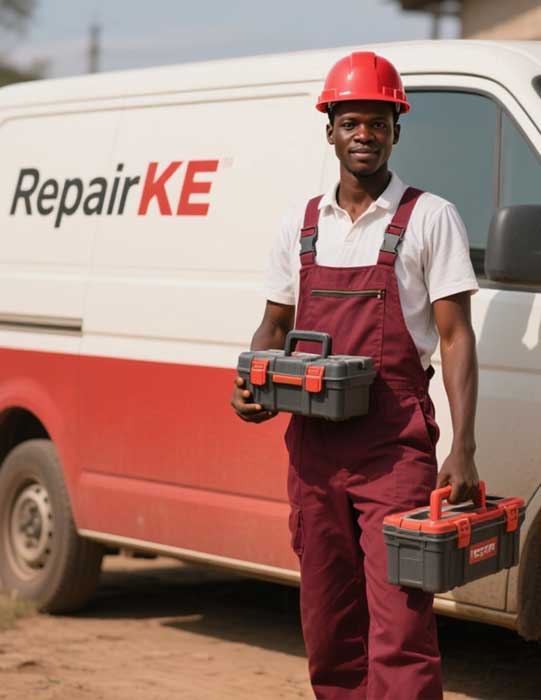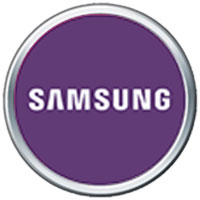
Laptop Problems and Their Repair Solutions
Laptops are essential tools for work, education, and entertainment, but like any complex device, they can encounter a range of issues. From sluggish performance to hardware failures, these problems can disrupt your workflow and cause frustration. This article explores common laptop problems, their causes, and practical repair solutions to help you troubleshoot and restore your device to optimal condition.
1. Slow Performance
The Problem
A laptop that takes ages to boot up, lags during basic tasks, or freezes frequently is one of the most common complaints. Slow performance can make even simple tasks feel cumbersome.
Causes
- Overloaded Storage: A nearly full hard drive or SSD can slow down operations.
- Insufficient RAM: Running multiple applications with limited RAM causes bottlenecks.
- Background Processes: Too many programs running in the background consume resources.
- Malware or Viruses: Malicious software can hog system resources.
- Outdated Hardware/Software: Older hardware or unupdated operating systems struggle with modern demands.
Repair Solutions
- Free Up Storage: Delete unnecessary files, uninstall unused programs, and move large files to an external drive or cloud storage. Use disk cleanup tools to remove temporary files.
- Upgrade RAM: If your laptop supports it, adding more RAM can significantly boost performance. Check your laptop’s specifications to confirm compatibility.
- Manage Startup Programs: Disable unnecessary programs from starting automatically. On Windows, use Task Manager; on macOS, go to System Settings > Login Items.
- Run Antivirus Scans: Use reputable antivirus software to detect and remove malware. Windows Defender or third-party tools like Malwarebytes are effective options.
- Update Software: Ensure your operating system, drivers, and applications are up to date. For Windows, use Windows Update; for macOS, check the App Store or Software Update.
- Upgrade to an SSD: If your laptop uses a traditional HDD, replacing it with a solid-state drive (SSD) can drastically improve speed.
2. Overheating
The Problem
Laptops that become excessively hot to the touch or shut down unexpectedly are likely overheating. Overheating can damage internal components over time.
Causes
- Dust Buildup: Dust in vents or fans obstructs airflow, causing heat to accumulate.
- Faulty Cooling System: A malfunctioning fan or dried-out thermal paste can impair cooling.
- High Workload: Running resource-intensive programs like games or video editing software generates excess heat.
- Poor Ventilation: Using the laptop on soft surfaces like beds or couches blocks vents.
Repair Solutions
- Clean the Vents and Fans: Use compressed air to blow out dust from vents and fans. For deeper cleaning, open the laptop’s back panel (if comfortable) or consult a professional.
- Replace Thermal Paste: If the laptop is old, the thermal paste on the CPU/GPU may have degraded. Reapplying high-quality thermal paste can improve heat transfer.
- Use a Cooling Pad: External cooling pads with fans can enhance airflow and keep temperatures down.
- Adjust Power Settings: Switch to a power-saving mode to reduce processor workload. On Windows, go to Control Panel > Power Options; on macOS, use Energy Saver settings.
- Ensure Proper Ventilation: Always place the laptop on a hard, flat surface to allow air circulation.
3. Battery Draining Quickly
The Problem
A laptop that barely holds a charge or dies within an hour of unplugging can severely limit portability.
Causes
- Aging Battery: Laptop batteries degrade over time, typically after 2–3 years or 300–500 charge cycles.
- High Power Consumption: Bright screens, background apps, or intensive tasks drain the battery faster.
- Faulty Charging System: A damaged charger, cable, or charging port can prevent proper charging.
Repair Solutions
- Optimize Settings: Lower screen brightness, disable Wi-Fi/Bluetooth when not needed, and close unnecessary apps. Enable battery-saver modes in Windows or macOS.
- Replace the Battery: If the battery health is below 80% (check via system diagnostics or third-party tools), replace it with a compatible battery from the manufacturer or a trusted supplier.
- Inspect the Charger and Port: Test with another compatible charger to rule out cable or adapter issues. If the charging port is loose or damaged, seek professional repair.
- Calibrate the Battery: For older laptops, fully charge, discharge, and recharge the battery to recalibrate its gauge. Follow manufacturer guidelines for best results.
4. Screen Issues
The Problem
Problems like a flickering screen, dead pixels, black screens, or cracked displays can render a laptop unusable or difficult to operate.
Causes
- Loose/Damaged Display Cable: Internal video cables may loosen or fray over time.
- Graphics Driver Issues: Outdated or corrupted drivers can cause flickering or display errors.
- Physical Damage: Drops or pressure can crack the screen or damage the display panel.
- Hardware Failure: A failing GPU or motherboard can result in a blank or distorted screen.
Repair Solutions
- Update/Reinstall Graphics Drivers: Download the latest drivers from the manufacturer’s website (e.g., NVIDIA, AMD, Intel) or use driver update tools. If issues persist, uninstall and reinstall the driver.
- Check Display Cable: If comfortable, open the laptop to inspect and reseat the display cable. Otherwise, consult a technician.
- Connect to an External Monitor: If the screen is black but the laptop powers on, connect it to an external monitor. If the external display works, the issue is likely the screen or its connection.
- Replace the Screen: For cracked or malfunctioning screens, replace the display panel. Purchase a compatible screen and follow online guides, or hire a professional for precision.
- Diagnose Hardware: Persistent issues may indicate GPU or motherboard failure, requiring advanced diagnostics at a repair shop.
5. Keyboard or Touchpad Malfunctions
The Problem
Keys that don’t respond, a sticky keyboard, or an unresponsive touchpad can hinder productivity.
Causes
- Debris or Spills: Dust, crumbs, or liquid spills can interfere with key or touchpad functionality.
- Driver Issues: Outdated or corrupted keyboard/touchpad drivers may cause unresponsiveness.
- Hardware Damage: Physical wear or impact can damage internal connections.
Repair Solutions
- Clean the Keyboard/Touchpad: Use compressed air or a soft brush to remove debris. For spills, immediately power off, disconnect, and clean with isopropyl alcohol (consult a professional if unsure).
- Update Drivers: Download the latest keyboard and touchpad drivers from the manufacturer’s website or use Device Manager (Windows) or System Settings (macOS).
- Test with an External Device: Connect an external keyboard or mouse. If they work, the issue is likely with the laptop’s hardware.
- Replace Components: If cleaning and driver updates don’t help, the keyboard or touchpad may need replacement. Many laptops allow easy keyboard swaps; touchpad repairs may require professional assistance.
6. Noisy Hard Drive or Fans
The Problem
Grinding, clicking, or whirring noises from the laptop can indicate failing components or poor maintenance.
Causes
- Failing Hard Drive: Clicking or grinding noises often signal a dying HDD.
- Overworked Fans: Dust or high workloads can cause fans to spin loudly.
- Loose Components: Vibrations from loose screws or parts can create noise.
Repair Solutions
- Back Up Data Immediately: If you suspect a failing hard drive, back up all data to an external drive or cloud storage to prevent loss.
- Run Disk Diagnostics: Use tools like Windows Disk Check or macOS Disk Utility to assess drive health. Replace the drive if errors are detected.
- Clean Fans: Remove dust from fans and vents using compressed air to reduce noise and improve cooling.
- Replace the Hard Drive: Swap a failing HDD for an SSD, which is quieter, faster, and more reliable. Clone the old drive to the new one using software like Clonezilla.
- Tighten Loose Parts: If comfortable, open the laptop to check for loose screws or components and secure them.
7. Connectivity Issues
The Problem
Failing to connect to Wi-Fi, Bluetooth, or USB devices can disrupt workflows and peripheral use.
Causes
- Driver/Software Issues: Outdated network or USB drivers can cause connectivity problems.
- Hardware Failure: A faulty Wi-Fi card, USB port, or Bluetooth module may be the culprit.
- Network Configuration: Incorrect settings or router issues can prevent connections.
Repair Solutions
- Restart and Reset: Restart the laptop and router. Reset network settings if needed (Windows: Network Reset; macOS: Renew DHCP Lease).
- Update Drivers: Download the latest network and USB drivers from the manufacturer’s website.
- Test Hardware: Use another device to confirm if the issue is with the laptop or the network/peripheral. If USB ports fail, test with different devices to isolate the problem.
- Replace Faulty Components: A failing Wi-Fi card or USB port may need replacement. Consult a technician for motherboard-level repairs.
- Check Bluetooth Settings: Ensure Bluetooth is enabled and devices are paired correctly. Remove and re-pair devices if issues persist.
Preventive Maintenance Tips
To minimize laptop problems and extend its lifespan:
- Regular Cleaning: Dust vents and fans every 3–6 months to prevent overheating.
- Software Updates: Keep your OS, drivers, and apps updated to avoid compatibility issues.
- Safe Handling: Use a padded laptop bag and avoid placing heavy objects on the device.
- Backup Data: Regularly back up files to an external drive or cloud service like Google Drive or OneDrive.
- Use Surge Protectors: Protect your laptop from power surges with a quality surge protector.
When to Seek Professional Help
While many issues can be resolved with DIY solutions, some problems require expert intervention:
- Complex Hardware Repairs: Motherboard, GPU, or intricate soldering work should be handled by professionals.
- Data Recovery: If a hard drive fails and data is critical, professional recovery services are safer.
- Warranty Concerns: If your laptop is under warranty, contact the manufacturer before attempting repairs to avoid voiding coverage.
Laptop problems, while frustrating, are often fixable with the right approach. By understanding the root causes and applying targeted solutions, you can restore your device’s performance and reliability. Regular maintenance and cautious use can prevent many issues, ensuring your laptop remains a dependable tool for years to come. If a problem feels overwhelming, don’t hesitate to consult a professional technician to get your laptop back in top shape.




